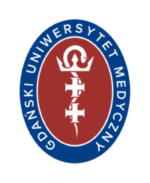Positive results from the Basic Research Meeting, Brussels
Each year, Europe as a whole invests some 30 billion euro in the life sciences – research that deals with living organisms including plants animals and humans. Despite being roughly equal to the total amount spent in the US, however, this investment is spread across 25 different countries and policy frameworks, and as a result is used in a far more fragmented manner. (Click here to read about, and download, Commission reports on the comparision of the EU and US biotech sectors)
To address this situation, the Commission is keen to identify and promote synergies between the funders of basic life science research in Europe, and with this in mind it organised an international conference in Brussels on 13 December to explore the possibilities.
This overspill of results to other areas highlights another important aspect of basic research in modern life sciences – it’s increasingly complex and interdisciplinary nature. According to Christian Patermann, Director for biotechnology, agriculture and food at the Commission’s Research DG: ‘Complexity has to be dealt with perhaps more in the life sciences than in other areas, and we need multidisciplinary approaches […] to overcome this fragmentation and complexity.’
Given the need for such multidisciplinary approaches, even in fundamental investigation, Mr Patermann emphasised that the possible creation of a European Research Council (ERC) , with an emphasis on funding individual teams, would not fulfil all the basic research needs of the life sciences. ‘Basic research can also be collaborative, let’s not forget.’
In order to provide suitable support infrastructures,such as bioinformatics resources and tissue collections, in coordinated way, Professor Kafatos called for the creation of a European programme for life science infrastructures. Such a programme would have to be based on ongoing evaluation of requirements, linked to the EU’s thematic priorities, and embedded in European centres of excellence ‘in order to make them responsive to the needs of leading scientists,’ he said. Professor Kafatos finished by stressing that ‘infrastructures are required for, but are different from, basic research.’
However, recognising that EU funding for life sciences research currently only amounts to around 5 per cent of the European total – albeit a considerable lump sum – Dr Trias announced the Commission’s intention to create an annual‘funders’ forum’ where Europe’s main sponsors of life sciences research will meet to discuss synergies and seek to address challenges in a coordinated fashion.
With discussions still underway as to the structure and scope of the forum, it will be some time before Europe can fully overcome the current fragmentation of basic research funding in the life
sciences. However, if any were unconvinced of the pressing need to do so, Mr Patermann concluded reminded the audience of the conclusion reached by Heads of State and Government in Barcelona in 2002: ‘After information technology, life sciences and biotechnology represent the next wave of technological revolution in the knowledge-based economy.’
Read more here.
Source: Cordis Rapidus












